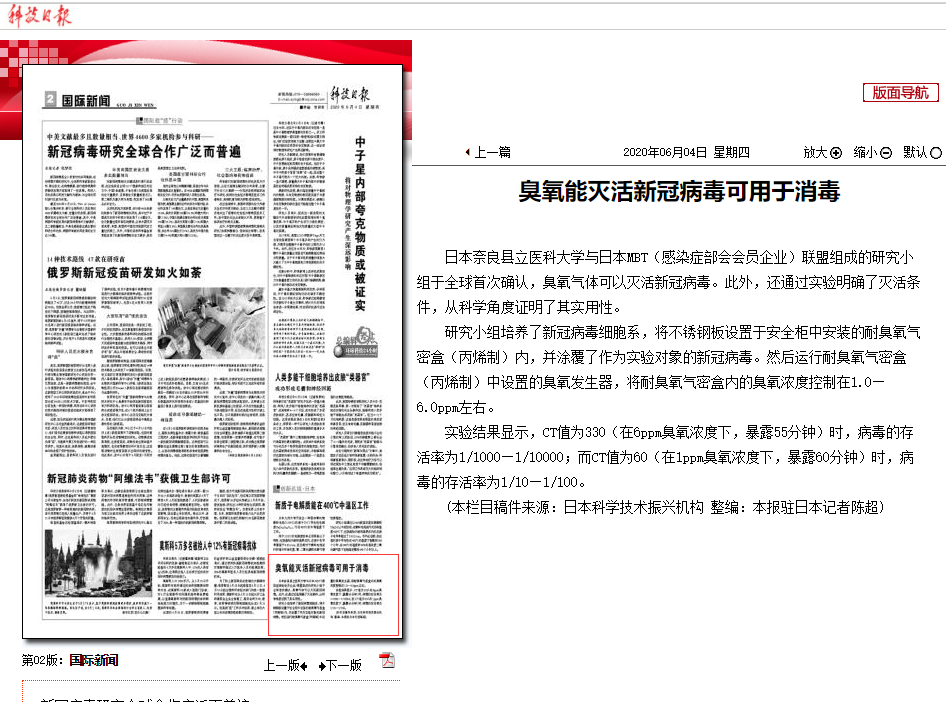
Ozone can inactivate the new coronavirus and can be used for disinfection

Ozone can inactivate the new coronavirus and can be used for disinfection (reprinted from Science and Technology Daily)
A research team composed of Japan's Nara Prefectural Medical University and Japan's MBT (member company of the Ministry of Infectious Diseases) alliance confirmed for the first time in the world that ozone gas can inactivate the new coronavirus. In addition, the inactivation conditions were clarified through experiments, proving its practicability from a scientific perspective.
The research team cultivated the new coronavirus cell line, placed a stainless steel plate in an ozone-resistant airtight box (made of acrylic) installed in a safety cabinet, and coated it with the new coronavirus that was the experimental subject. Then run the ozone generator installed in the ozone-resistant airtight box (made of propylene) to control the ozone concentration in the ozone-resistant airtight box to about 1.0-6.0ppm.
Experimental results show that when the CT value is 330 (at an ozone concentration of 6 ppm, exposed for 55 minutes), the survival rate of the virus is 1/1000-1/10000; while the CT value is 60 (at an ozone concentration of 1 ppm, exposed for 60 minutes) At this time, the survival rate of the virus is 1/10-1/100.